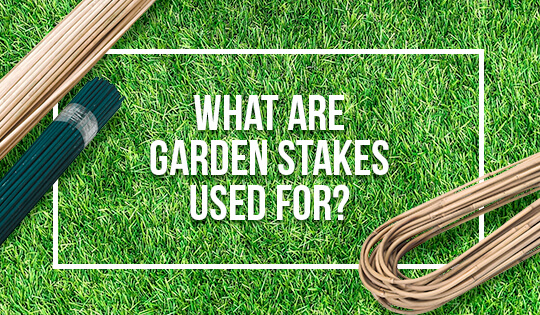What are garden stakes used for?
2 mins readThe humble garden stake is a staple for many a backyard gardener. But for those without a green thumb, what do they do? Why do you need them?
Let’s take a look.
To strengthen the weak
The main function of a garden stake is to ensure that a young or weak plant can hold itself up against the elements. The main concern for weak plants is the wind, which can snap thin branches and bend soft stems easily. A correctly installed garden stake will protect against such an assault by providing the plant with somewhat of a secondary backbone. It supports the plant, ensuring that it stays upright on even the windiest of days.
A garden stake can be made of any material strong enough to deal with heavy winds, but you’ll most commonly see them in hardwood, bamboo or plastic.
Proper garden stake use
While there’s a temptation to stake any plant that looks a little bit fragile or tired, garden stakes should only be used when there’s a real risk of a plant being damaged. The wind serves to strengthen the plant—it has evolved to cope with the worst of Mother Nature, and allowing it do so will let it build up strength and resistance to wind.
But if you do have a plant which requires staking, it’s best to use three stakes at a distance instead of resting the stem directly up against one. The aim is to offer support without totally shielding the plant from anything that may hurt it. A little bit of stress is good.
Triangulate three stakes around the plant, then use some tree ties to secure the stake to the stem. This technique guards against heavy winds, but still allows the plant to move around a bit. Depending on how weak the plant is you may need to tie multiple pieces of ties between the stake and the stem.
Choosing your plants wisely
Choosing the best plant can be overwhelming, but you can easily learn how to choose the best plant. When selecting your plants from the nursery, be aware that the bigger plants do not always mean they are the best—a big plant is more susceptible to shock when being transferred from pot to soil.
Look for blemishes, spots, discoloration and even pest damage on leaves and stems – these are good signs that the plant is unhealthy. Just checking the plant has been well-tended can immensely help your search for a plant to repot. This will ensure the plant is strong and will minimise the need for stake assistance.
If you would like to learn more about garden stakes, give All Stakes Supply a call on 1300 130 123 or visit www.allstakesupply.com.au to explore our range of garden stakes.

